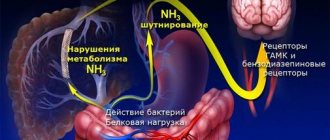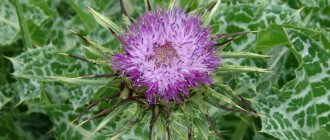Typhus
The incubation period can last from 6 to 25 days, most often 2 weeks. Typhus occurs cyclically, in its clinical course there are periods: initial, height and convalescence. The initial period of typhus is characterized by a rise in temperature to high values, headache, muscle aches, and symptoms of intoxication. Sometimes prodromal symptoms may occur before this (insomnia, decreased performance, heaviness in the head).
Subsequently, the fever becomes constant, the temperature remains at 39-40 ° C. On days 4-5, a decrease in temperature may be observed for a short time, but the condition does not improve, and the fever subsequently resumes. Intoxication increases, headaches, dizziness intensify, disorders of the sensory organs (hyperesthesia), persistent insomnia, sometimes vomiting, dry tongue coated with a white coating occur. Impaired consciousness develops up to twilight.
On examination, hyperemia and swelling of the skin of the face and neck, conjunctiva, and scleral injection are noted. The skin is dry and hot to the touch, from the 2-3rd day positive endothelial symptoms are noted, and on the 3-4th day the Chiari-Avtsyn symptom is detected (hemorrhages in the transitional folds of the conjunctiva). On days 4-5, moderate hepatosplenomegaly develops. Increased fragility of blood vessels is indicated by pinpoint hemorrhages of the palate and pharyngeal mucosa (Rosenberg enanthema).
The height of the period is characterized by the appearance of a rash on the 5-6th day of the disease. In this case, constant or remitting fever and symptoms of severe intoxication persist and worsen, headaches become especially intense and throbbing. Roseolous-petechial exanthema manifests itself simultaneously on the trunk and limbs. The rash is thick, more pronounced on the lateral surfaces of the torso and internal limbs, localization on the face, palms and soles is not typical, as are subsequent additional rashes.
The coating on the tongue becomes dark brown in color, progression of hepatomegaly and splenomegaly (hepatolienal syndrome) is noted, constipation and bloating often occur. In connection with the pathology of the renal vessels, pain may be observed in the area of their projection in the lumbar region, a positive Pasternatsky sign (pain when tapping), oliguria appears and progresses. Toxic damage to the ganglia of the autonomic innervation of the urinary organs leads to atony of the bladder, lack of reflex to urinate, and paradoxical diabetes (urine is excreted drop by drop).
At the height of typhus, an active development of the bulbar neurological clinic occurs: tongue tremor (Govorov-Godelier symptom: the tongue touches the teeth when protruding), speech and facial expression disorders, smoothed nasolabial folds. Anisocoria, nystagmus, dysphagia, and weakened pupillary reactions are sometimes noted. Meningeal symptoms may be present.
Severe typhus is characterized by the development of typhoid status (10-15% of cases): a mental disorder accompanied by psychomotor agitation, talkativeness, and memory impairment. At this time, further deepening of sleep and consciousness disorders occurs. Shallow sleep can lead to frightening visions, hallucinations, delusions, and forgetfulness.
The period of the height of typhus ends with a decrease in body temperature to normal levels after 13-14 days from the onset of the disease and relief of symptoms of intoxication. The period of convalescence is characterized by the slow disappearance of clinical symptoms (in particular from the nervous system) and gradual recovery. Weakness, apathy, lability of nervous and cardiovascular activity, memory impairment persist for up to 2-3 weeks. Sometimes (rather rarely) retrograde amnesia occurs. Typhus is not prone to early recurrence.
Brief historical data
Descriptions of mass diseases occurring with the clinical picture of typhus are found already in the works of doctors of ancient times, then they were reported in works on medicine dating back to the Middle Ages and modern times. The clinical characteristics of diseases that emerged in the first half of the 19th century made it possible in 1856 to establish the nosological independence of typhus and typhoid fever and to distinguish them from an undefined group of fever diseases.
A great contribution to the development of clinical issues and pathology of typhus was made by such outstanding clinicians as S.P. Botkin - in Russia, Liebermeister - in Germany and Murchison - in England. Works by L.V. Popov (1875) proved the existence of specific changes (granulomas) in small vessels of the brain in people who died from typhus. In 1877 O.O. Mochutkovsky in Odessa proved the presence of an infectious factor (pathogen) in the blood of patients with typhus, and a little later G.N. Minkh, based on epidemiological observations, suggested the role of lice in the transmission of this infection. Later, the role of lice in the transmission of infection was proved by the French scientist Charles Nicole (1909). The works of Ricketts (in America) and Provaček (in the Czech Republic) established the most important features of the pathogen (Rickettsia Provaček).
Classical studies (1916-1921) by the prominent Soviet scientist I.V. Davydovsky were completed with a comprehensive description of the pathological anatomy of typhus. Since 1916, the Weil-Felix serological reaction has been used in the laboratory diagnosis of typhus. In 1939, Durand obtained a vaccine for vaccination against typhus. The biological properties of the pathogen, epidemiology, pathogenesis, immunogenesis were studied in detail, the clinic in all its variants was described in detail. Since 1950, antibiotics (synthomycin, chloramphenicol, biomycin, tetracycline) have been successfully used to treat typhus. In Russia, typhus has been eliminated.
Pathogenesis and pathological anatomy
Having penetrated from the feces of an infected louse through a scratch, a skin crack or a bite site into the human blood, rickettsiae are spread throughout the body. Being intracellular parasites, they infect the endothelium of arterioles and capillaries, causing the development of characteristic histological changes here. Along with endovasculitis and the formation of blood clots, destruction of small vessels, stasis and hemorrhage are observed. Specific typhus granulomas are also characteristic - clusters of cells surrounding a small blood vessel like a sleeve.
The listed vascular changes are observed in various organs and tissues, but they are especially pronounced in the medulla oblongata and in other parts of the central nervous system, including the cerebral cortex. This explains the presence of a number of clinical symptoms from the nervous system, circulatory disorders and the development of meningoencephalitis - factors that determine the most important manifestations of the disease.
Due to similar changes in the small blood vessels that supply the nodes of the sympathetic and parasympathetic nervous system, a number of autonomic functions are disrupted, including metabolism and peripheral circulation. The development of specific thromboendovasculitis and blood stasis in arterioles and capillaries explains the formation of roseola and petechiae on the skin, appearing from the 4-5th day of illness.
All these disorders in the patient’s body are intensified due to specific intoxication caused by metabolic products of pathogens: Provachek’s rickettsia toxins inhibit the activity of the nervous system and cause paresis of blood vessels. Under the influence of pathogen toxins in patients with typhus, blood circulation in the arterioles and capillaries is disorganized, which is especially pronounced in the central nervous system.
Epidemiology
The disease is classified as a zoonotic disease with natural focality. Natural foci have been identified in the Primorsky, Khabarovsk and Krasnoyarsk territories, in a number of regions of Siberia (Novosibirsk, Chita, Irkutsk, etc.), as well as in Kazakhstan, Turkmenistan, Armenia, Mongolia. The reservoir of rickettsia in nature is about 30 species of various rodents (mice, hamsters, chipmunks, gophers, etc.). Transmission of infection from rodent to rodent is carried out by ixodid ticks (Dermacentor nuttalli, D. silvarum, etc.). The infestation of ticks in foci reaches 20% or more. The incidence in the tick habitat ranges from 71.3 to 317 per 100,000 population per year. The immune layer of the population in natural foci ranges from 30 to 70%. Rickettsia remain in ticks for a long time (up to 5 years); transovarial transmission of rickettsia occurs. Not only adult ticks, but also nymphs participate in the transmission of infection to humans. Rickettsia is transmitted from ticks to rodents through blood sucking.
A person becomes infected during his stay in the natural habitats of ticks (shrubs, meadows, etc.), when he is attacked by infected ticks. The greatest activity of ticks is observed in spring and summer (May-June), which determines the seasonality of the incidence. The incidence is sporadic and occurs mainly among adults. Not only rural residents get sick, but also those traveling outside the city (garden plots, recreation, fishing, etc.). In recent years, about 1,500 tick-borne rickettsiosis diseases are registered annually in Russia.
Brill's disease
Brill's disease is a distant relapse of epidemic typhus. The disease occurs suddenly, the source of infection and carriers of pathogens (lice) are absent, clinical signs are similar to those of typhus, but with a milder course. The disease has several names: sporadic typhus, relapsing or Brill-Zinsser disease.
Cases of the disease were first described in 1908 - 1909 by N. Brill in America and in 1938 by N. Zinsser. Russian scientists K. Tokarevich, G. S. Mosing and P. F. Zdrorovsky made a great contribution to the study of the disease.
After suffering from typhus, patients develop stable and long-term immunity, but in some patients, rickettsia can persist (stay) for a long time in the mononuclear cells of the lymph nodes and typhus granulomas and, with a decrease in immunity, can cause the development of a relapse of the disease - Brill's disease. In this case, patients become a source of infection for lice. The clinical picture of the disease is blurred, it is difficult to isolate rickettsia from the blood, serological reactions with specific antigens give a positive result. Methods for diagnosing the disease and treatment regimens are similar to those for epidemic typhus.
Prevention
After hospitalization of the patient, the prevention of typhus consists of carrying out disinsection, disinfection and anti-pediculosis measures at the source of the disease. It is necessary to identify those who were in contact with an infected person, and the source of infection itself, and conduct laboratory tests.
A patient who has suffered from the disease needs to be observed by specialists for some time.
When preventing tick-borne typhus, you should fight ticks: use repellents, wear special equipment, or, in the absence of such, sew protective elements into regular clothing.
Epidemic in Tunisia
In 1909, typhus struck the French colony of Tunisia. Mechnikov's colleague at the Pasteur Institute, Charles Nicole, inspected the hospital for the natives. The queues at the emergency room were huge and lasted for days. The floor and yard were littered with the bodies of the sick and dying. In these queues people became infected with typhus. The reception staff also became ill, but typhus did not spread in the wards. Nicole noticed that the "typhus" was harmless once he was washed, shaved and changed into hospital pajamas. The clothes seized from the patients were examined and only one type of parasite was found on them - body louse. Then Nicole injected the blood of "typhus" into the macaque. She became ill, and the lice that bit her infected other isolated macaques. For this experience, Nicol received the 1928 Nobel Prize. He was lucky to live to see her.
Less fortunate was the American Howard Ricketts, who in 1910 proved that typhus-like diseases were caused by previously unknown intracellular parasites - and immediately fell victim to them. But he managed to notice an important property of rash pathogens: they are not cultivated outside a living organism (this greatly complicates the production of a vaccine; only 30 years later in Perm, Alexey Pshenichnov learned to cultivate rickettsia).
Causes
The pathogenesis of the rash type begins with the penetration of pathogenic bacteria from the genus Rickettsia into the body. They are nonmotile gram-negative intracellular parasites. The route of transmission of the disease is transmissible, from an infected person to a healthy person. The carrier is the louse.
There are several types of diseases: epidemic, endemic and tick-borne. Epidemic typhus is called classical; its causative agent is Provacek's rickettsia.
Endemic typhus predominates in countries with warm climates in the summer. Clinically it occurs in a milder form. Infection occurs through the bites of rat fleas.
Tick-borne typhus is caused by rickettsia (Rickettsia sibirica), which is transmitted through tick bites. Found in the Far East and Siberia. The etiology of tick-borne typhus is different from others; Rickettsia sibirica contains a toxic substance and can multiply not only in the cytoplasm, but also in cell nuclei. Infectivity increases in the spring-summer period, sometimes remaining at a high level until October.
If the skin is damaged, the penetration of rickettsia into the blood can occur in less than 15 minutes. The incubation period is 10–14 days, in the case of the tick-borne species – 4–6 days.
Rickettsia Provacek
The causative agent of the disease is Provacek's rickettsia, which are microorganisms that parasitize the endothelial cells of blood capillaries. Under natural conditions, Provacek's rickettsia multiply in the endothelial cells of the blood capillaries of a sick person and in the epithelial cells of the intestinal wall of lice infected with them. Rickettsia can be cultivated in the lung tissue of white mice and on the chorion-allantoic membrane of a chicken egg embryo, which is used to obtain vaccines against typhus (Durand and Cox vaccines). Rickettsia quickly die in a humid environment, but persist for a long time in lice feces and in a dried state. They die at a temperature of 100 degrees, under the influence of conventional disinfectants.
Complications
Among the possible complications of typhus, one should first of all note trophic tissue lesions (skin necrosis, bedsores) and thrombophlebitis (the veins of the lower extremities are most often affected). Some patients, especially those with previous exhaustion of the body or poor oral care, may develop purulent parotitis. Sometimes limited bilateral focal pneumonia develops; Otitis is possible in children. Toxic neuritis of the auditory nerve is not uncommon, although in these patients soon (usually by the time of discharge from the hospital) hearing acuity is completely restored. In some severe cases, the development of typhus meningoencephalitis is observed. The disease leaves behind some immunity and no relapses are observed.










